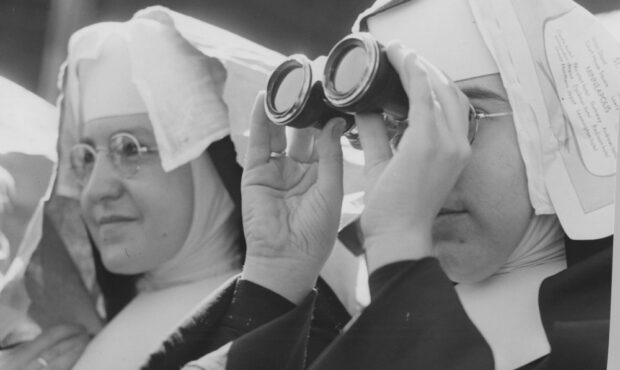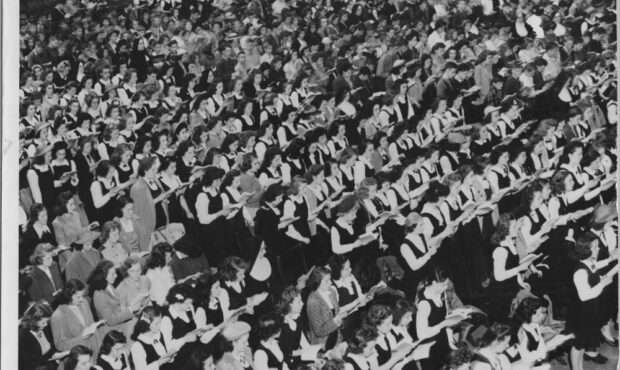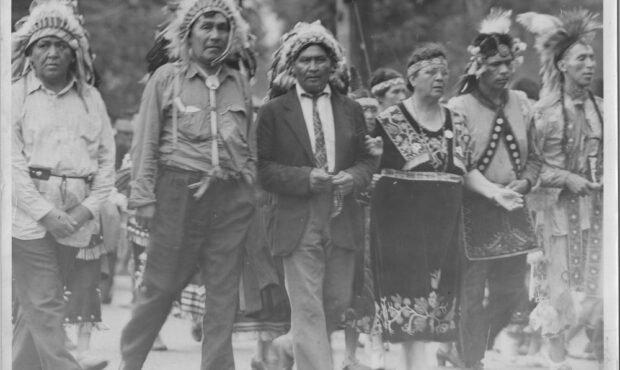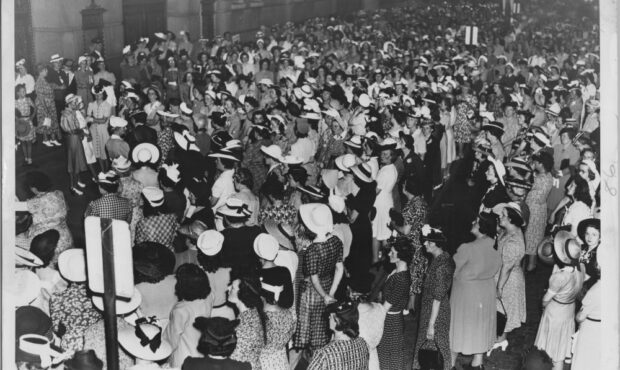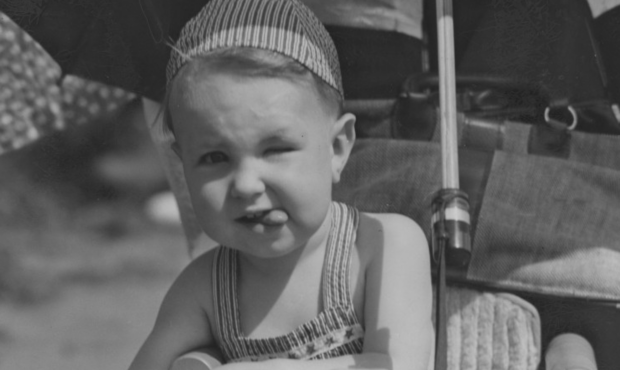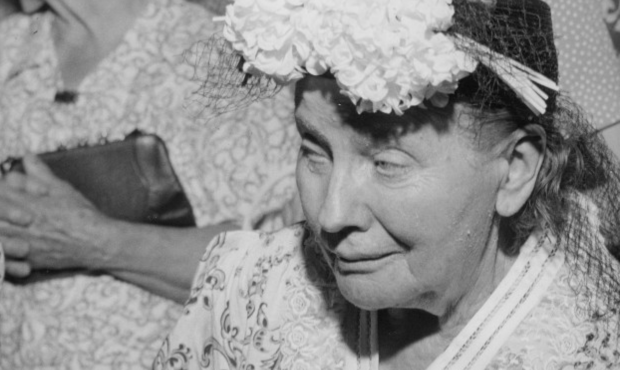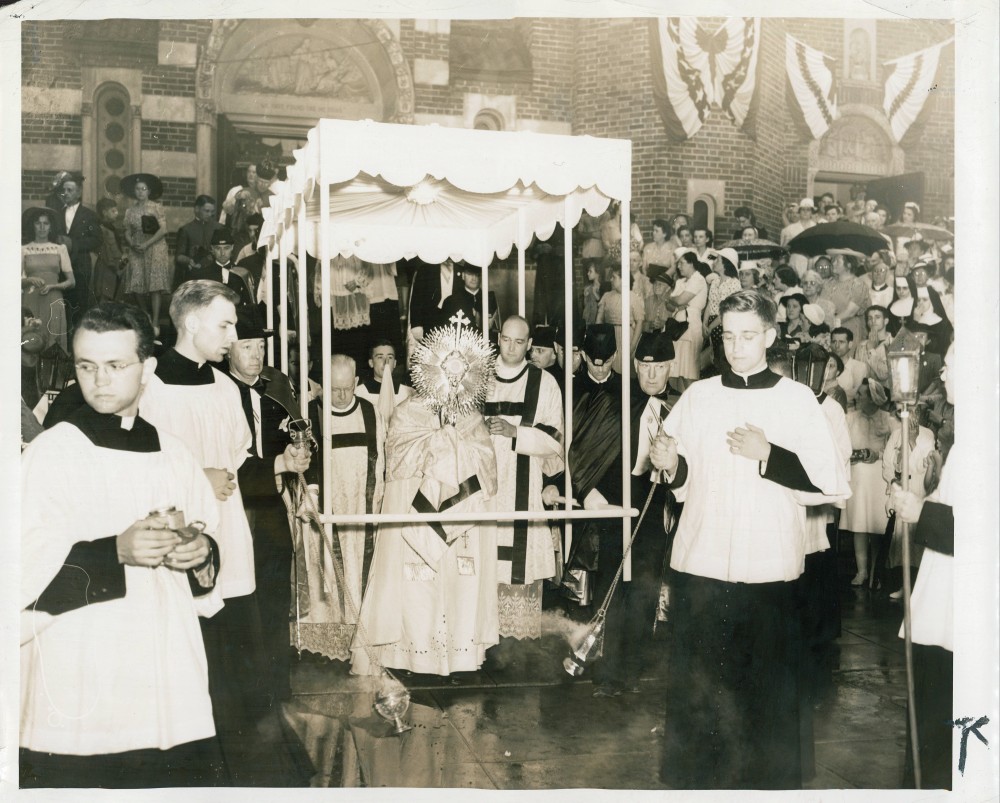
However, the Indianapolis event, which took years of planning and runs from July 17 through July 21, is not the first of its kind — it is just the first in a very long time.
“The joke has been, ‘I’ll wave to you in the crowd of 50,000 people,’ but I really do think that this is going to be really unexpected for all of us,” said Zoe Dongas of New York, a perpetual pilgrim attending this year’s Eucharistic Congress, when she finally arrived in Indianapolis after two months of traveling.
This year’s celebration marks the first time the National Eucharistic Congress has been held since 1941, and is the 10th iteration of the event. Before this year, the most recent was from June 23-26, 1941, when Catholics across the country crowded into the Minnesota State Fairgrounds. It was held, in part, due to World War II disrupting plans for larger Congresses across the globe.
Masses, public eucharistic adoration, and processions drew 475,000 people to the 1941 event, according to records on file in the Hennepin County Library in Minnesota. More than 100 photos tell the story of people traveling to the Twin Cities and Falcon Heights; black-and-white images depicted long-standing Catholic faith in the United States in an event held just six months before Japan’s attack on Pearl Harbor.
A Eucharistic Parade displayed the diversity of the attendees. A Native American congregation in cultural garb walked in the same procession as young Scouts carrying American flags and wearing their familiar field uniforms. At the Pontifical Mass for Children — one of the many celebrations held at the Ninth National Eucharistic Congress — 14,000 children sang in the choir. According to the Hennepin County Library Archives, more than 300 people were treated for heat stroke at the event.
“We had been preparing to sing at the Eucharistic Congress children’s Mass since the beginning of my eighth-grade year,” said Paul Ditter, a Minnesota parishioner who attended the event 83 years ago. “We each received the Gregorian hymn book — 153 pages of songs — all in Latin, of course.”
The 2024 National Eucharistic Congress is predominantly hosted in the home of the Indianapolis Colts, but events and exhibits are also being held in the Indianapolis Convention Center and St. Peter the Evangelist Church. Similarly, the Ninth National Eucharistic Congress was set up in Saint Paul Union Depot, the Minneapolis Auditorium, the St. Paul Auditorium, the Cathedral of St. Paul, and the Basilica of St. Mary, as well as at the Minnesota Fair Grounds in Falcon Heights.
The Archdiocese of St. Paul, then led by Archbishop John Murray, hosted the congress.
“I recall seeing the eucharistic altar and how beautiful it was, the very large stage and a pipe organ,” Ditter added. “They had erected a building which housed the organ inside, and you could see the vertical louvers open and shut.”
Since 1952, International Congresses have been held, including a gathering in Philadelphia in 1976, but this is the first time in more than 80 years that one has been orchestrated explicitly for Catholics based in the United States. Five of the 10 National Eucharistic Congresses since the first in 1926 were organized by Bishop Paul Maes, the Bishop of Covington, in Kentucky, from 1885 to 1915.
“The 10th National Eucharistic Congress scheduled for 2024 in Indianapolis is an opportunity for the Catholic Church in the United States to resume the work begun long ago by Bishop Maes and the Priests’ Eucharistic League, Bishop Schrembs, and the numerous clergy, religious, and lay people who planned and participated in these events,” the United States Conference of Catholic Bishops said in 2022.
(Photos: Hennepin County Library)

